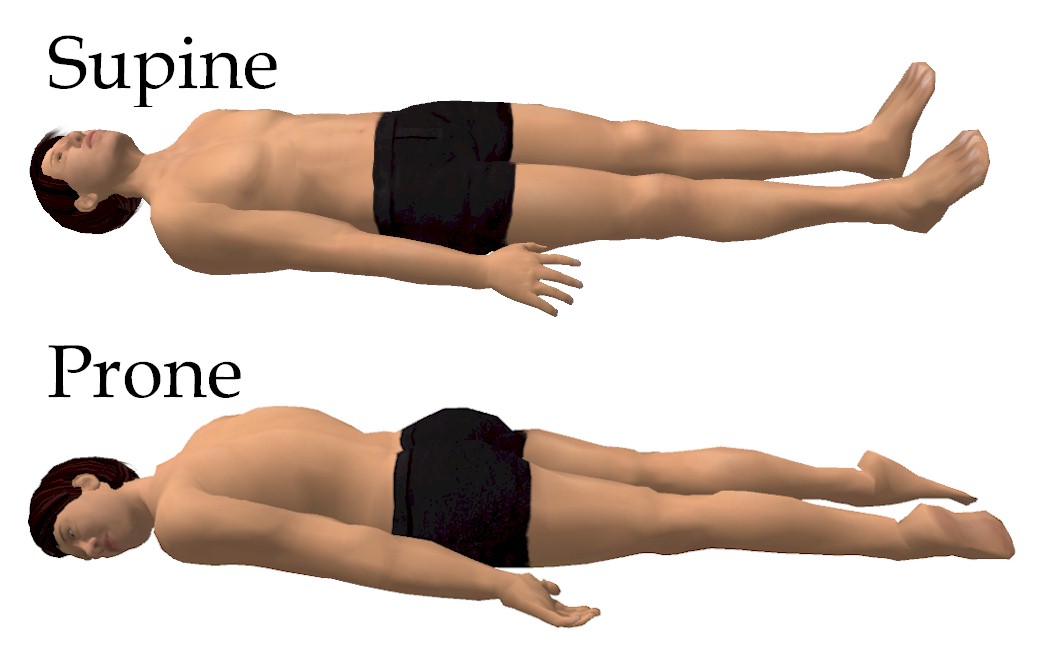Introduction
Anatomical Position
A key concept that must be introduced before any anatomical information can be learned is the idea of the anatomical position. Anatomical position is a standard position that serves as a reference for the body. A person is said to be in anatomical position when they are standing erect with their feet together, their hands at their side, with the palms facing forward. Unless otherwise stated, most anatomical descriptions will refer to a person when in anatomical position.

Additionally, the terms supine and prone are used to describe a body that is lying down. Supine refers to a body lying on its back (face up), while prone refers to a body lying on its belly (face down). Anatomical position is designed to remove ambiguity when describing anatomical structures. This is particularly important when comparing the locations of multiple features using directional references.


